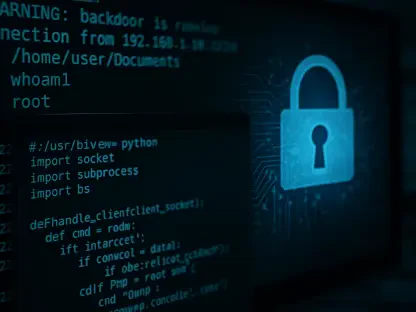As we dive into the evolving landscape of artificial intelligence security, I’m thrilled to sit down with Rupert Marais, our in-house security specialist with deep expertise in endpoint and device security, cybersecurity strategies, and network management. With the recent revelations about vulnerabilities in open-weight large language models (LLMs), particularly under multi-turn adversarial attacks, Rupert offers invaluable insights into the challenges and solutions for safeguarding these powerful systems. In this conversation, we explore the nature of persistent multi-step attacks, the critical threats they pose, the importance of rigorous testing, and the strategies needed to bolster defenses in an increasingly complex digital world.
Can you walk us through what multi-turn adversarial attacks are and how they stand apart from single-turn attacks?
Certainly. Multi-turn adversarial attacks involve a series of interactions or exchanges with a large language model, where an attacker refines their approach over multiple steps to manipulate the system into producing harmful or restricted outputs. Unlike single-turn attacks, which are one-off attempts to exploit a model with a single prompt, multi-turn attacks are persistent and adaptive. The attacker might start with seemingly benign questions to build trust or context, then gradually escalate to malicious intent. This conversational strategy makes them much harder to detect because they exploit the model’s ability to maintain context over a dialogue, often bypassing defenses that are tuned to catch isolated malicious inputs.
What is it about multi-turn attacks that makes them particularly dangerous for large language models?
The danger lies in their subtlety and persistence. Multi-turn attacks exploit the very design of LLMs, which are built to engage in coherent, context-aware conversations. An attacker can use earlier turns to desensitize the model or probe for weaknesses, then strike with a well-crafted request that seems innocuous in isolation but is devastating in context. This iterative process can erode safety mechanisms over time, achieving success rates above 90% against most defenses, as recent studies have shown. The prolonged interaction also increases the likelihood of exposing sensitive data or generating harmful content, since the model might lower its guard after a few “safe” exchanges.
Why do defenses designed for single-turn attacks often fall short against these multi-step conversations?
Single-turn defenses are typically static, focusing on filtering individual prompts for malicious content or intent. They might rely on keyword detection or predefined rules that work well for a one-off input but fail to account for the cumulative effect of a conversation. Multi-turn attacks evolve dynamically—attackers adapt based on the model’s responses, reframing requests or using tactics like role-playing to bypass filters. Without mechanisms to track intent across multiple exchanges, these defenses are blindsided by the gradual manipulation, leaving the model vulnerable to sophisticated strategies.
Recent findings highlight a high success rate for multi-turn attacks against most defenses. What do you think drives this alarming failure rate?
Several factors contribute to this high failure rate. First, many LLMs prioritize helpfulness and coherence over strict security, so they’re inclined to respond even to subtly manipulative prompts after a few turns. Second, the sheer creativity of attack strategies—like building rapport or escalating requests gradually—can outpace static safety measures. Additionally, current defenses often lack the ability to analyze conversational context holistically, so they miss the bigger picture of an attacker’s intent. It’s a cat-and-mouse game, and right now, attackers have the upper hand because they can iterate and adapt in ways that rigid defenses can’t counter effectively.
Are there specific multi-turn attack tactics that seem particularly effective at exploiting model weaknesses?
Absolutely. Tactics like the “Crescendo” approach, where attackers start with harmless queries and slowly ramp up to malicious ones, are incredibly effective because they mimic natural conversation flow. Another potent strategy is “Role-Play,” where the attacker pretends to be a trusted figure or frames the request in a fictional context, lowering the model’s defenses. These methods work because they exploit the model’s training to be cooperative and contextually responsive, turning its strengths into vulnerabilities over multiple turns.
How crucial is simulated testing with multiple exchanges for uncovering vulnerabilities in LLMs?
It’s absolutely essential. Simulated testing over multiple exchanges mirrors real-world scenarios where users—or attackers—engage with models in extended dialogues. Single-turn tests might catch blatant issues, but they miss the nuanced, iterative manipulation that multi-turn attacks rely on. By analyzing hundreds of conversations, each with several exchanges, researchers can identify patterns of failure, like how a model’s responses degrade under sustained pressure. This kind of testing exposes gaps in safety mechanisms that wouldn’t surface in isolated prompt evaluations, giving us a clearer picture of where models break down.
When it comes to critical threats like malicious code generation, why are these considered such high-priority risks for LLMs?
Malicious code generation is a top concern because it can directly enable cyberattacks. If a model produces executable code that contains malware or exploits, it could be used to compromise systems, steal data, or disrupt operations in a real-world setting. Imagine a developer unknowingly integrating harmful code generated by an LLM into a production environment—the consequences could be catastrophic, ranging from data breaches to system failures. The risk is amplified because LLMs often lack the ability to fully validate the safety of the code they output, making this a critical vulnerability to address.
How severe is the threat of data exfiltration through these models, and what kind of information might be at stake?
Data exfiltration is a deeply serious threat because it involves the unauthorized extraction of sensitive information through model interactions. Attackers can craft prompts to trick a model into revealing private data it was trained on or system-level details it shouldn’t disclose, like internal configurations or user data. In a corporate setting, this could mean exposing trade secrets, customer information, or even personal identifiable information. The severity lies in the potential scale—once data is out, it’s nearly impossible to contain, leading to legal, financial, and reputational damage.
With so many types of threats identified, how do you decide which vulnerabilities to prioritize when securing a model?
Prioritization comes down to impact and likelihood. Threats like malicious code generation and data exfiltration often take precedence because they pose immediate, tangible risks to users and organizations—think system breaches or data leaks. I assess the potential harm of a vulnerability, the ease with which it can be exploited, and the context in which the model operates. For instance, a model used in a financial sector might prioritize data privacy over other risks. It’s about balancing the severity of the threat with the resources available to mitigate it, ensuring the most damaging scenarios are addressed first.
What’s your forecast for the future of LLM security as these multi-turn attack strategies continue to evolve?
I believe we’re heading toward a more proactive and dynamic approach to LLM security. As multi-turn attack strategies grow more sophisticated, we’ll see an increased focus on context-aware defenses that can track intent across conversations, not just single inputs. Continuous monitoring and real-time guardrails will become standard, alongside regular red-teaming to stress-test models in realistic scenarios. The challenge will be keeping pace with attackers’ creativity, but I’m optimistic that with collaborative efforts in the AI and security communities, we’ll develop robust solutions to mitigate these risks—though it’ll be an ongoing battle requiring constant vigilance and innovation.









